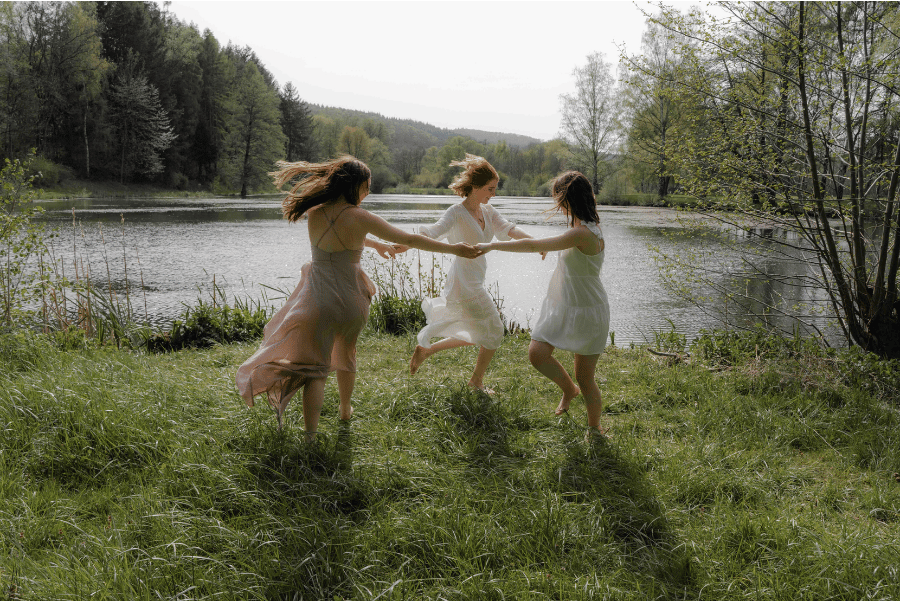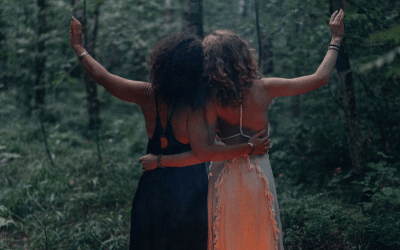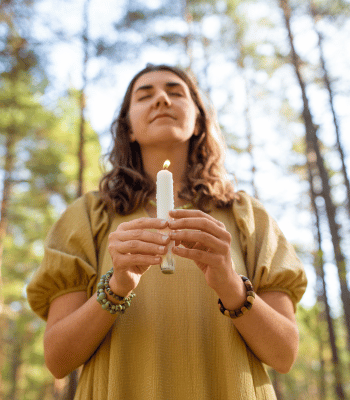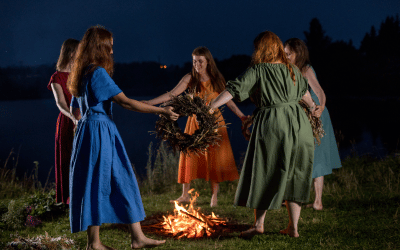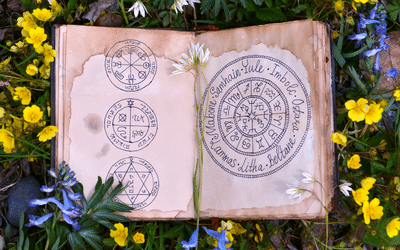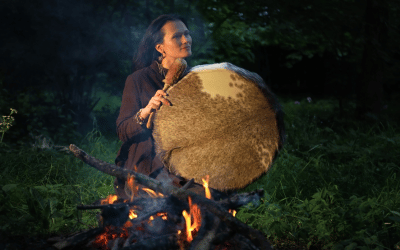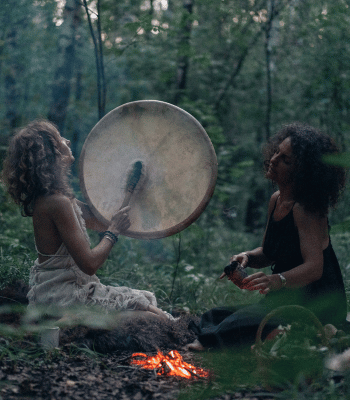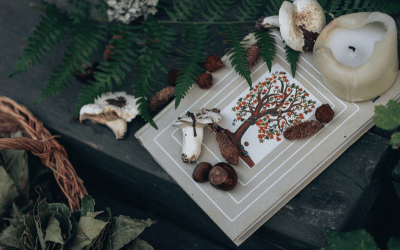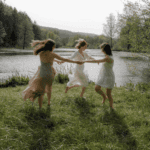Paganism has long been a persecuted religion with all sorts of untrue and harmful information being spread about it. Pagans were called ‘evil’ and were not welcomed in society.
This couldn’t be further from the truth.
Paganism is hard to encompass in one definition because there is so much diversity within it. But at its core, it is about honoring the natural world, the interconnectedness between us all, and respect for others.
I wrote a blog post to share all about paganism with you. I cover what paganism is, what pagans believe in, pagan rituals, and the return of paganism in modern society
If you have ever been curious about paganism, you are in the right place.
What is paganism?
It is the ancestral religion of the whole of humanity and draws on the traditional religions of indigenous peoples throughout the world.
Paganism encompasses a diverse community of people with a reverence for nature at its core.
There is a strong focus on ritual. However, there are no specific traditions that need to be followed and many pagans follow their own inspiration. Rather it is a very personal experience with individuals pursuing their own vision of the divine.
Some examples of pagan communities are wiccans, druids, and shamans.
In all pagan communities, divination and magic are seen as accepted parts of life.
There are many untrue and unfair beliefs that circulate about paganism. Pagans do not worship the devil, are not evil or sexual deviants, and do not practice ‘black magic’. Rather, pagans stand for the opposite of this.
Some pagans also choose to participate in other religions as well as follow their pagan rituals.
What do pagans believe in?
Paganism is not based on any doctrine or sacred text. Rather, it is a primarily personal experience.
One thing that is common between all the different pagan groups is the reverence for nature.
They recognize the divine in nature, are deeply aware of the natural world, and respect the ongoing cycle of life and death.
It is for this reason that many pagans are eco-friendly and seek to live in a way that minimizes harm to the natural environment.
In paganism, the spirit of a place, for example, a mountain or a lake is recognized and often personified into a deity. The many deities of Paganism are a representation of the diversity of nature. Some pagans see the many gods and goddesses as a community of individuals, others see them as different parts of one god or goddess, and others think there is a supreme deity. This is a personal choice. However, all pagan religions recognize the feminine face of divinity.
Pagans have a strong belief in the interconnectedness of the world. This means that divinity cannot be separated from nature. Further, they believe that the divine world will answer genuine requests for information.
Paganism and rituals
Pagan rituals focus on observing natural cycles like the moon cycles or seasonal changes, honoring a deity, or celebrating a rite of passage like a transition into adulthood or marriage.
Because paganism is such a diverse religion, the form of ritual varies by tradition. However, pagan rituals tend to engage the participants physically by dancing, chanting, or drumming to name a few. This may be collective or solitary.
Some pagans present offerings to their gods or ancestors. There may be prayer and meditation. Representation of earth, air, fire, and water are also common.
Pagan rituals are most often conducted outdoors to connect more deeply with the natural world.
In certain groups, women may take the leading role in ritual, however, emphasis is generally on equality between genders.
The Wheel of the Year in Paganism
Nature-oriented pagans follow a seasonal cycle which is often referred to as the wheel of the year. Pagans celebrate eight festivals which are spaced every six or seven weeks throughout the year. These seasonal celebrations, also known as sabbats, divide the wheel into eight segments that represent the different divisions of the year.
Four of the sabbats are in the solar calendar and the other four have Celtic origins. Seasonal differences mean that the solar festivals are celebrated on opposite dates between the two hemispheres.
Winter Solstice
The winter solstice, also known as Yule, falls on the shortest day of the year. This is in December in the northern hemisphere. This sabbat honors the sun and the halfway point of winter.
This is a time of reflection, and acknowledging that all beginnings emerge from darkness.
Imbolc
This festival, celebrated in February, is centered around the lighting of fires which celebrates the increasing power of the sun over the coming months
In the past, winter stores of food would be getting low around this time of year. So Imbolc rituals were performed to harness divine energy that would ensure a steady supply of food until the next harvest in six months’ time.
This sabbat is a time for preparation, creativity and imagination with the early signs of spring.
Spring Equinox
The spring equinox, also known as Ostara, occurs when the length of the day and the night are equal. This occurs twice a year, once in Spring and once in Autumn, which is known as the Autumn equinox.
The spring equinox occurs in March in the northern hemisphere and celebrates the renewed life of the Earth that comes with the Spring.
Beltane
Beltane is a fire festival in April or May that celebrates the coming of summer and the fertility of the coming year.
Fire is the most important element of Beltane celebrations. It is seen to have purifying qualities which cleanse and revitalize. People leap over the Beltane fire to bring good fortune, fertility, and happiness through the coming year.
Summer Solstice
The summer solstice, also known as midsummer or Litha, is the longest day of the year and the time when the sun is at its highest point in the sky. In the northern hemisphere, it occurs in June.
This sabbat celebrates growth and life but it is also a time to acknowledge that the sun will now begin to decline once more towards winter.
Lammas
Lammas occurs at the beginning of August. For agricultural communities, this was the first day of the harvest when the fields would be lush with abundance.
Although most modern-day pagans are not farmers or part of farming communities, it is still seen as a harvest festival.
Autumn Equinox
This celebration, also referred to as Mabon, is celebrated in September in the northern hemisphere when the length of the day and night are equal.
As the activity of the summer months slows down, this is a time to reflect on the past season.
Samhain
This celebration in October marks the Feast of the Dead. It is known as Halloween to non-pagans.
It is believed that it is the time of year when the veils between this world and the Otherworld are at their thinnest.
Loved ones who have recently died are honored and it is a time for reflection on significant changes in life like the passing of relationships or jobs.
The return of paganism
After centuries of persecution, Paganism is on the rise. As people realize that paganism is actually their ancestral heritage, the attraction to it only grows. This is largely because it is a religion that refuses to judge other people harshly simply because they are different.
People feel accepted and are part of a loving community.
The decline of enforced religious conformity and greater religious freedom has also allowed people to explore a greater range of religions that they may have been unable to explore before.
In the 1960s, Paganism was an attractive religion to follow for those rebelling against restrictive social norms. From the 1970s the growth in Paganism was through small groups.
However, after the mid-1990s, with the increase in communication through the Internet, there was increased access to religious material which led to a boom in paganism. You can now find all sorts of information on crystals, tarot cards, astrology, and herbal magic all over the internet.
Whether or not you believe in pagan deities or rituals, one cannot deny that it is a beautiful way to live. To be so in tune with and respectful of Mother Earth is the only way to ensure we save our beautiful planet from more harm and destruction.
Join me on Instagram @mind.yoga.soul to learn more about connecting and honoring nature. Or join one of my upcoming women’s circles to dive into the world of goddesses, the divine feminine, and spirituality.

